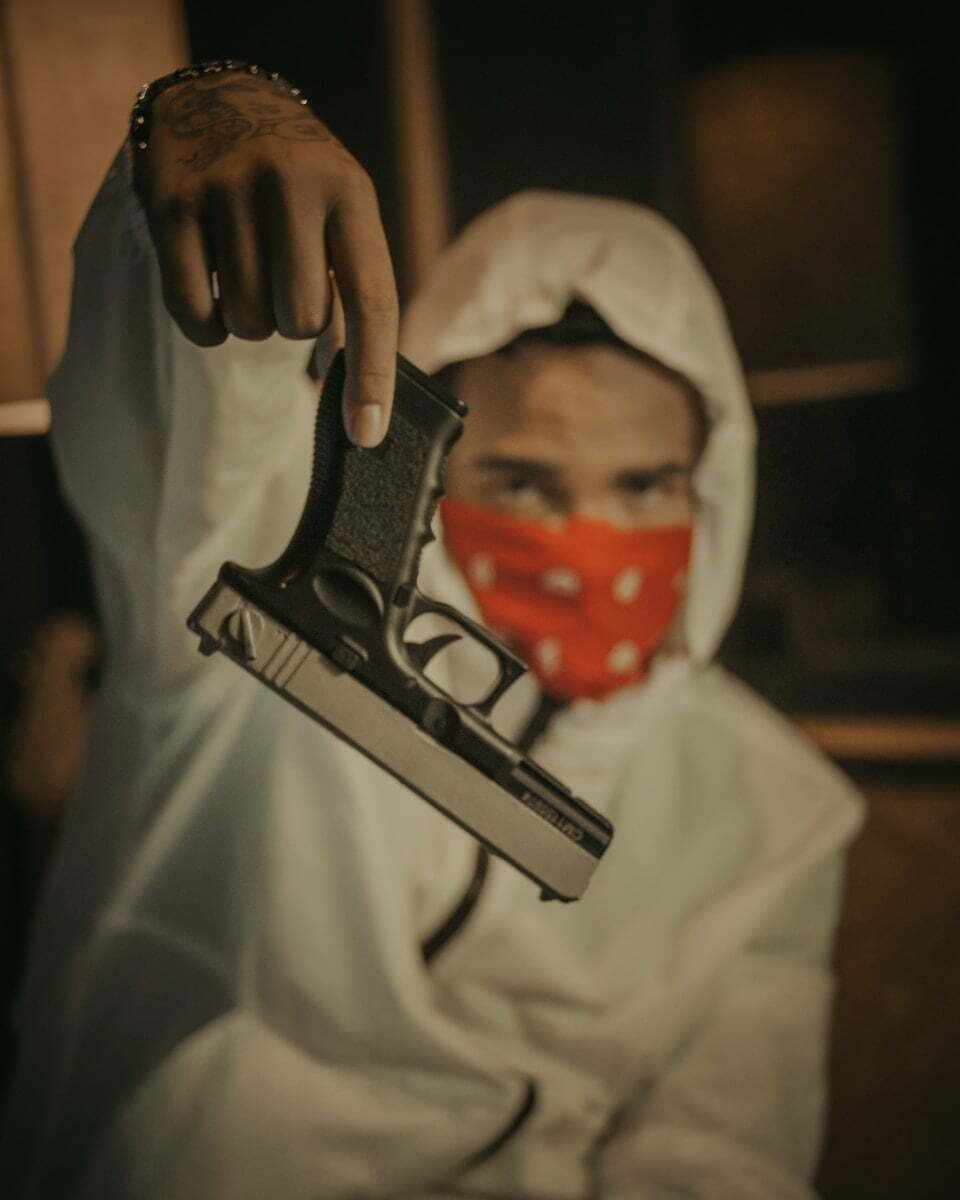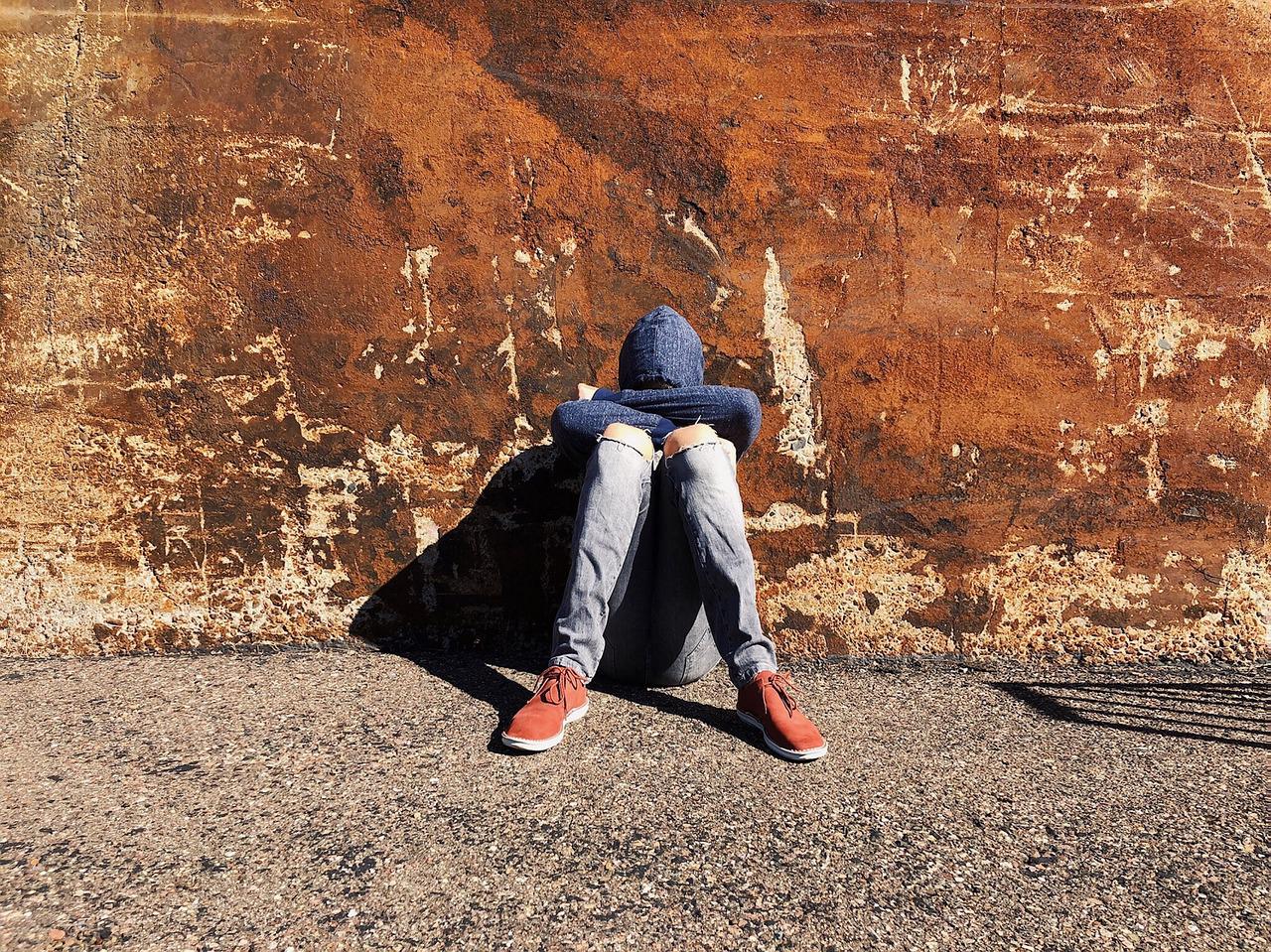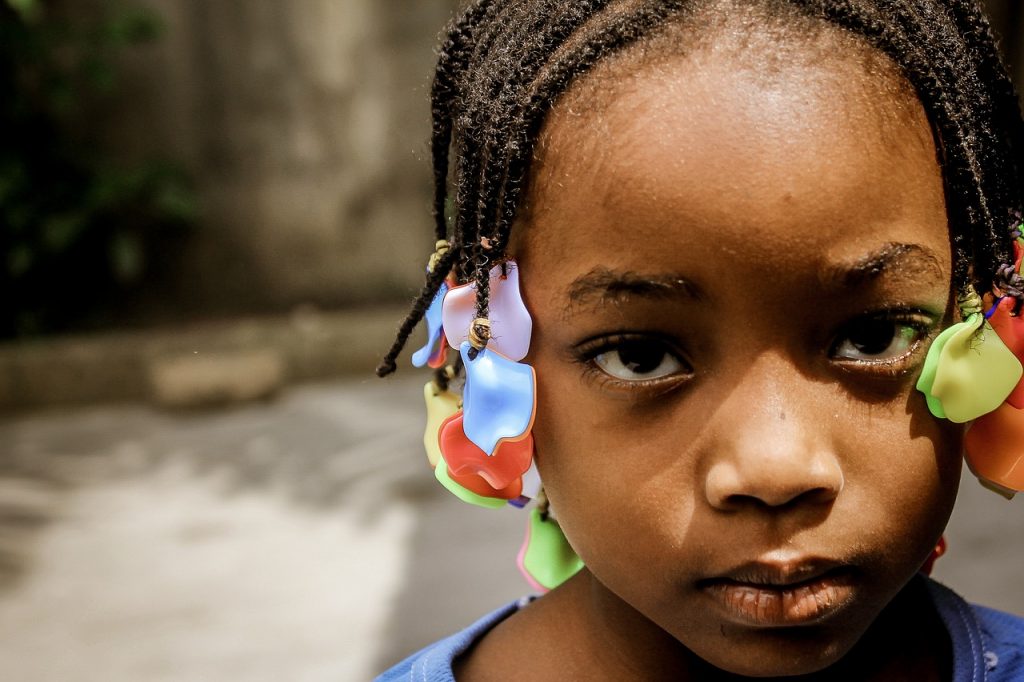What should I do I suspect gang involvement?
A child can fall very quickly into gang involvement and the response should be both rapid and dynamic. Agencies should share a collective responsibility to deal with gang culture, violence and criminality, whilst ensuring that the primary consideration will always be the protection and safety of children. Professionals will struggle to deal with gang related issues in isolation and there should be a multi-agency response to the recruitment and exploitation of a young person by a gang. Emphasis should be on prevention, creating positive changes and diversions in a young person’s life.
Professionals should be wary of viewing young gang members as having made a ‘lifestyle choice’. Many children do not make informed choices when opting to join a gang, with the majority being coerced, threatened or manipulated. It is important that professionals understand the complexity of the ‘push – pull’ factors affecting the young person and how they have or will potentially exploited. Professionals should also be mindful that whilst a young gang member may be the perpetrator of gang violence and criminality, they may also be a victim of gang violence and exploitation.
Early Assessment
Early identification and interventions are key to safeguarding children and young people from risk of gang involvement. Where professionals receive information, that a young person is either a member of a gang, is at risk of becoming involved in a gang or is at risk of harm from gang members, then they will need to make a referral to children’s social care, in line with the local agreed safeguarding protocol/pathway. Where that information reveals that young person is also a victim of crime or has committed a crime, then the crime and circumstances should also be reported to police.
Following receipt of the referral , the circumstances should be assessed by a qualified and experienced social worker. The lead social worker should clarify with the referrer as to why the referral was made, exactly what the concerns are and why the referrer to believes the child may be at risk of harm, as a result of involvement or potential participation in gang activity. The referrer should be asked to put their concerns in writing (within 48 hours) to ensure there is an accurate and clear audit trail. An initial assessment should be completed within 7 working days from referral.
Information and Intelligence gathering
Attempts should be made to try and verify the information. Gathering and developing an accurate intelligence profile on the child and circumstances, will allow you to create a proportionate, timely and relevant risk assessment and taker the necessary action. Building intelligence is like building a jigsaw; information often thought to be small and unimportant is often the piece that makes your picture complete. What information do all parties have on the child? Is the picture complete or is more information needed? Information should be shared and sought with/from other professionals particularly police who should have oversight of any gang issues within the local area.
Below are just a few ways of sourcing your information:
- obtain the full history of the child. Agencies all have different systems but there are protocols in place for information sharing. What can you tell each other?
- talk to parents or carers. Highlight your concerns and establish whether they have their own concerns or information that is relevant. You are looking for any of those gang membership vulnerabilities and signsg. noticeable changes in appearance, appears to be wearing ‘colours’, uses slang words, has a new nickname, interests in gang culture.
- where appropriate talk to the young person, explain your concerns and point out the risks. Disclosure from a child will be rare but coming across as non-judgemental might just get some half-truths from them.
- talk to the school. Is there a change in concentration/behaviour? Does /he she still hang around with the same friends or has this changed. Is there an emerging gang culture within the school? Have teachers picked up on any playground or classmate gossip?
- have you identified the child’s friends and known associates? Are they known gang members?
Immediate Harm
Where there are concerns that the child is at immediate risk of serious harm or there is a likelihood of serious harm, the police should be notified without delay. The welfare and safety of the child should be the foremost concern, and steps should be taken in line with safeguarding protocols to ensure the immediate safety of the child using statutory child protection powers and procedures. This includes the use of emergency powers (Emergency Protection Order (EPO) or Police Protection) to ensure the child remains or is removed to a place of safety.
Osman Warnings
Where there is, information received concerning a threat to the life of the young person then an ‘Osman Warning’ needs to be given to that young person. This is likely to occur where there is information that there has been an incident between rival gang members, the incident involved the young person and the rival gang is likely to seek retribution. An Osman Warning is derived from the case of Osman v United Kingdom (1998), a case where the applicants, Mrs Mulkiye Osman and her son Ahmet Osman complained that the authorities had failed to take adequate and appropriate steps to protect both the lives of Ahmet Osman and Mr. Ali Osman (husband to Mulkiye and father to Ahmet). Mr. Osman was fatally shot and Ahmet was injured in a shooting perpetrated by Paul Paget-Lewis, a former teacher of Ahmet. The Osman’s argued that the authorities failed to appreciate and act on clear warning signs and information that Paget-Lewis represented a serious threat of physical safety to safety of Ahmet Osman and his family. The results of this case placed a positive obligation on authorities to take preventative measures to protect an individual whose life is at risk from the criminal acts of another individual.
There have been occasions where police have issued Osman Warnings to young people without any further safeguarding interventions being instigated. This should never occur and the police should always ensure that any Osman Warning results in an automatic referral to local authority children’s social care services. This should trigger the strategy discussion, or the need to take immediate safeguarding action.
Initial Stages
A strategy/multi-agency professionals meeting with all relevant parties should take place as soon as possible. This should include a representative from the local police gang’s unit, the missing person’s unit if the child is regularly going missing, the carer (if accommodated), any NGO representative, any Key Worker and a representative from the child’s school. The strategy meeting should look at the risks and immediate interventions that can be put in place. What level of risk are you dealing with? What are the immediate safeguarding concerns? Many police forces use a Gangs Matrix system (see below). However, for the purposes of the initial strategy meeting risk categorisation should be kept simple:
Low risk – A child or young person who is at low risk of becoming involved in gang related activity.
Medium risk – Information that a child or young person may be on the periphery of gang related activity, likely to be involved in, or is at risk of being drawn into gang related activity.
High risk – Credible and corroborated information that a child or young person is involved with a gang i.e. member/affiliated. There will be a number of gang membership signs present.
If the child is a Looked After Child (LAC) then the care plan should be reviewed. An initial risk assessment should be completed and this should be agreed between Social Care and Police. The Social Worker should liaise with other agencies – Education, Health Professionals and Care Providers to make them aware of the potential presence of gang related issues. If a child is currently under a referral to the Youth Offending Team (YOT) then the YOT worker should be identified and told. Any Non-Government Organisations(NGO) already working with the child or family should also be made aware. Actions from the strategy meeting should be clear, specific and relevant, with all attendees being clear on what they are required to do. There should also be a discussion around approaching and engaging the young person’s parent(s)/guardian/carer. They may be a valuable source of information as they may have witnessed signs and behaviours that their child is being influenced or coerced by gang members.
As with any safeguarding issue, care should be taken when engaging parents who may be unware that their child is involved in potentially risky behaviours. Some parents may react negatively, deny that their child is involved with gangs and ‘shut up shop’, making future engagement difficult. Phraseology will be important with the term ‘gang member’ and other terminology being potentially devastating to a parent. It should be clearly communicated that enquiries are being made because there are concerns around the safety and welfare of their child and their involvement will be valuable in preventing their child being or becoming involved in gangs.
Engagement with the Child
Efforts should be made to engage with the child. It may be a ‘big ask’ for a child to talk about their gang activities for several reasons – fear around their own safety, fears and concerns for their family’s safety, fear of revealing crimes that they may have committed during their gang association. If the child is willing to talk about gang involvement, professionals should always take seriously what the child says. There has been much feedback from young people that professionals do not appear to listen to them, that we appear to not understand the significance of the information being disclosed – a disconnect between young people and professionals. It is clearly difficult for some of us to interact with young people, particularly those that are suspicious and have an extreme dislike of the authorities. Professionals should be mindful that a child involved with a gang can be both a victim and a perpetrator, with varying needs.
Breaking away from a gang is a massive challenge for a child. The push factors will still be there, as will the pull factors, with the added complication of the absolute certainty that there will be some retribution from the gang if they were to break ties, which could ultimately lead to severe injury or death. This initial engagement may be the only opportunity to demonstrate that there are people that care and give them the hope that they can escape and live a positive lifestyle. If it doesn’t go well then there may not be a second opportunity. Therefore, professionals should consider the early introduction of a NGO mentoring service, even at that first engagement.
Interventions
Whilst the law and numerous safeguarding policies give professionals various options around interventions, diverting a young person away from gang activity will almost certainly require specialist help from NGO’s. Whether professionals can access these services will of course depend on the availability of the support services in your area and whether there is funding in place. The scale of options available to you will be based on how much of a gang problem you have in your area, plus the partnerships and programmes the Safeguarding Board has put in place through their strategic gang strategy.
There has been very little research into what interventions work and are the most impactive, when trying to divert young people away from gangs and serious youth violence. Options vary across the UK with results differing between the diverse projects. Whilst there is no doubt that the structure and content of a programme is important, it’s success is usually due to the dedicated hard work of those involved. Whenever we see positive outcomes for young people, it has usually been because an individual has invested a great deal of time and effort in building trust and rapport with the young person. Having someone who the child relates to and who they see as understanding them is key.
Potential intervention methods/projects can include:
- Mentoring schemes – aimed at steering young people away from involvement in gangs and youth violence
- Skills Based Programmes - activities aimed at developing and teaching young people techniques and skills to control their own behaviour, anger management, conflict resolution and participate in social activities
- Community-based programmes - engagement with communities and their young people, delivering gang awareness and prevention sessions
- Lifestyle Skills Training/Programmes – skills on making healthy lifestyle choices
- Sports based programmes – providing opportunities for young people to become involved in healthy and positive activities
- Family based intervention programmes – support for chaotic and dysfunctional families, including providing life skills and parenting training
- Schools based programmes – group based sessions on gangs, bullying, substance misuse etc.
- Youth development and leadership programmes – programmes can include job skills based training e.g. mechanics, plumbing, media etc.
- Quasi-military programmes – mentor led military-style structured and supervised programmes (not to be confused with boot-camp type regimes)
- Functional Family Therapy (FFT) – a short term family based therapeutic programme for young people involved in serious anti-social behaviour
- Multidimensional Family Therapy (MDFT) – a family-centred treatment for families with a child suffering with problems related to antisocial behaviour, disorder, substance misuse
- Multidimensional Treatment Foster Care – an alternative to residential placement, for young people with delinquent behavioural problems
- Multisystemic Therapy (MST) – an intensive family and community based programme aimed at young people who have exhibited serious anti-social and delinquent behaviour (there is also Multisystemic Therapy for Problem Sexual Behaviour)
- Trauma-Focused Cognitive Behavioural Therapy (TF-CBT) - therapeutic intervention (psychotherapy or counselling for children and families with post-traumatic stress disorder (PTSD) or have experienced and have issues with traumatic life events
What about moving the young person away?
For looked after children we would generally only advise distant placements if there is a real danger to the child if they were to remain in their home area. Examples would be where the child is a gang member or gang affiliated, is involved in county line drug trafficking or is extremely vulnerable to CSE (Level 2 or 3). Even in these circumstances we are mindful that this not always the right thing to do. The report – ‘Running the Risks’ by the charity Catch 22, puts forward interesting and compelling evidence that moving a child to a distant placement to break the ties, is not always the best thing to do, often increasing missing episodes. Care should be taken when researching and exploring a suitable placement. Placing a gang involved young person into an area affected by gang-related crime could have a detrimental effect and draw them back into the very activities the placement was supposed to divert them from. We still see many examples where a gang involved young person is placed in either a children’s home or semi-independent accommodation, only to find that one of the current residents is a gang member from a rival gang. Housing two rival gang members together is potentially disastrous for the young people , the care provider and any other residents. If are involved in moving a young person to a distant placement , then move them to an area where there are no gangs.
Responding to the impact of gangs on an area requires a comprehensive multi-agency partnership, focusing on reduction, diversions and prevention. The Home Office recommends that it is best practice for each local authority to have a dedicated multi-agency group in place, to address gang related criminal activity. This multi-agency gangs group should have a strategic overview of the areas gang issues and meet regularly. They should:
- identify and agree a gang problem profile and the impact the gang or gangs have on the area. This should be evidenced based and incorporate information from a broad range of agencies (including NGO’s and community groups). Any mapping of gang issues or serious youth violence should incorporate cross border incidents from surrounding areas
- agree, coordinate and direct strategy. There should be short, medium and long term plans in place relating to prevention, diversion and enforcement
- identify agencies, non-government organisations and other partners that can assist in tackling gang issues and ensure that they are approached and involved - all agencies have a role to play
- develop a community consultation group, identifying and recruiting notable and respected members of the community to champion the fight against gangs. This group should include a youth element
- ensure that there are appropriate referral pathways in place for both statutory and non-statutory, partners
- identify local NGO’s, voluntary groups and projects that can provide intervention and prevention programs/schemes
- explore and secure funding for gang diversion initiatives and programs
- ensure that there are agreed information sharing protocols in place between agencies
- ensure that a training needs analysis has been completed and that there is joint training programme in place for all agencies involved in gang prevention/intervention
- identify individuals as special points of contact for all partner agencies and organisations. The local authority should have a nominated professional (Gangs Coordinator) with specialist training and knowledge around gang issues, who can act as a special point of contact for other practitioners requiring advice on gang related cases. This person should ideally be co-located with the local police gang’s unit or at least the Multi-Agency Safeguarding Hub (MASH)
- develop and provide structured exit pathways/programmes for gang members
- ensure that leadership teams in local schools are included in the partnership process and are provided with a full understanding of the gang issues in the area – schools should have curriculums that compliment gang diversion e.g. anti-bullying, conflict resolution skills
The use of a Gangs Matrix system
Some police areas use a matrix system to manage gang members and gang affiliated individuals (nominal’s). Some see this as a highly controversial tactic by the police, which racially discriminates against young people from some ethnic minority backgrounds. The use of the gang’s matrix in London has been defended by the Metropolitan Police who point to the fact that those that are identified as being at risk, are offered support to help divert them away from gang activity. Regardless of which side of this argument you sit on, the purpose of the matrix should be to assess the danger a person may pose to the public, society and themselves (in the case of a child or vulnerable adult). Using specific risk criteria, an individual is scored and then graded as to the level of risk and harm. Within the Metropolitan Police if a person is deemed high-risk then they are generally managed through a monthly Partnership Gang Nominal Meeting, where a person risk management plan is discussed. This allows partners to identify those most at risk and prioritise resources and direct bespoke methods of intervention. This includes safeguarding strategies and isn’t just about enforcement. Any like meeting in your area that deals with specific cases will benefit from a multi-agency approach e.g. Education, Youth Offending Team, Health, Mental Health, Probation Service, Housing and relevant NGO’s.
Gangs and the Law
There are a number of pieces of legislation and judicial restrictions that deal with gang related violence and gang related drug dealing. The criminal law deals with most aspects of unlawful gang related activity, including specialist legislation that deals with violent offenders and proceeds from crime. However, there are several civil measures available that can be used to disrupt gang activity, divert young people away from gang activity and prevent coercion by others. Below we look at gang injunctions:
A gang injunction is an effective civil tool that allows the police or a local authority to apply to the County Court, High Court or Youth Court (14-17 year olds) for an injunction, preventing a person from engaging in, encouraging or assisting gang-related violence or gang-related drug dealing. It can also be used to protect the respondent and their community from gang-related violence or gang-related drug dealing activity.
Youth violence is often the result or sign of gang related activity. However, professionals should be mindful that serious youth violence may still occur without any gang link. Serious youth violence are offences such as murder, rape, shootings, wounding and causing grievous bodily harm.
Section 34(5) Policing and Crime Act 2009 defines gang-related violence as: “Violence or a threat of violence which occurs in the course of, or is otherwise related to, the activities of a group that:
- a) consists of at least 3 people; and,
- b) has one or more characteristics that enable its members to be identified by others as a group.”
Section 34(5) Policing and Crime Act 2009 defines gang-related drug dealing activity as “the unlawful production, supply, importation or exportation of a controlled drug which occurs in the course of, or is otherwise related to, the activities of a group that:
- consists of at least 3 people, and
- has one or more characteristics that enable its members to be identified by others as a group”.
- applying for an injunction requires a civil burden of proof, meaning that the court must be satisfied on the balance of probabilities that an injunction is necessary
- 2 years is the maximum duration of an injunction (there is no minimum period)
- an injunction can impose prohibitions – preventing a person from doing certain actions/activities or conversely directing a person to do certain activities (positive requirements)
- prohibitions should be both proportionate and enforceable
- prohibiting association with other gang members
- prohibiting the respondent from being present
- visiting, or travelling through a particular place
- preventing the respondent from having or being in charge of a particular species of dog or having the dog in public
- restricting the use of the internet for gang-related purposes
- preventing the respondent from wearing specific articles of clothing in a particular place
- stop them from participating in particular activities between specified times on particular days
- directing the respondent to attend a training programme
- attend mediation meetings with rival gang members
- abide by a curfew
- undertake behaviour coaching sessions
- attend courses to prepare them for employment
- the applicant will need to have evidence that the respondent has engaged in, encouraged or assisted gang-related violence or gang-related drug dealing
- the applicant will need to satisfy the court that the injunction is necessary to prevent the respondent from being involved in gang related violence and gang-related drug dealing and/or to protect the respondent from such violence or drug dealing activity
- applicants must be either the chief officer of police for a police area (can be delegated to a senior police officer on their behalf; or a Local Authority
- an application should ordinarily be made with ‘with notice’ to the respondent but can be ‘without notice’ under certain circumstances. Applications for both differ so the guidance should be followed
- a court may make and interim order pending a full hearing
- applicants must undertake a consultation process before making an application. This should include consulting with other relevant interested agencies e.g. Youth Offending Team, Probation Service, Education, NGO’s, Housing. The requirement for consultation does not apply in the initial stages of a ‘without notice’ application
- an injunction must be served personally on the respondent, unless the court orders otherwise
- a breach of the order does not necessarily require an application for a breach hearing. Any decision to pursue a breach hearing normally rests with the original applicant who should consider the circumstances and seriousness of the breach. However, where a power of arrest is attached to the injunction and the police arrest the respondent for a breach, they must bring them before the court who can then deal with it as a contempt issue
- the court can attach a power of arrest to any injunction but this is not automatic and the court have to be satisfied as to the reasons why an injunction requires a power of arrest
- breach of an injunction is dealt with by a civil contempt of court, which is punishable by up to two years in prison and/or an unlimited fine
- a sentence for breach is not a criminal conviction, even if the respondent is sent to prison
Whilst many will view gang injunctions as enforcement, they can also be used to help protect vulnerable young people from being coerced and drawn into gang activity. There are certain factors to consider when dealing with a respondent who is aged between the ages of 14 and 17:
- the consultation period must include the Youth Offending Team (YOT) in whose area the respondent resides.
- the Local Authority should be consulted and actively involved in any potential application for a gang injunction. The fact that an application is being considered means that there are child protection issues and therefore child protection procedures should be instigated
- where a child is under 16 the court will require the attendance of a parent or guardian. Realistically this should now also apply to 17-year old’s as well
- before an applicant can make an application to the court relating to the breach of an injunction, they must consult with the YOT
- a breach can be dealt with in different ways. The Youth Court has the power to make a Supervision Order or a Detention Order. Before making any order, the court must consider a report compiled by the YOT
- Supervision Orders - A supervision order may last for up to 6 months and contain one or more of three elements: 1) - a supervision requirement; 2) – an activity requirement; 3) – a curfew requirement. An activity requirement means a direction for the young person to do a specific activity within a specific time period. A curfew requirement means the young person must remain at a certain place during the specified time period. This can involve electronically monitoring the young person (a Tag)
- Detention Orders - the court may make a detention order where it is satisfied that, the breach is so serious, that there is no other power available to them, that would be appropriate. A detention order may not last more than 3 months. The young person may be detained in a secure training centre; a young offender institution; secure accommodation; a secure college; or a secure children’s home
3 Comments
Leave A Comment Cancel reply

Get Involved!
Share Your own Safeguarding News and Research to reach a wider Audience
From Our Blog
Types of Child Exploitation
An overview of differnt types of child exploitation, including sexual exploitation, county lines and criminal exploitation
Sextortion – Guide and Resources
Sextortion – a guide and links to useful resources.
DVPOs and DVPNs – Guide and Resources
Domestic Violence Protection Notices (DVPNs) and Domestic Violence Protective Orders (DVPOs) – a guide and links to useful resources.
Type 4 FGM – mixed messages
Is labia stretching a form of FGM? What are the views of the World Health Organisation? Is it against the law?
Related Posts
The Safeguarding Hub
Share Your Safeguarding News And Research To Reach A Wider Audience










Love this. Will be using all of this in my day to day work
Thanks Kendra, we appriciate your support, glad to see its of use to you
hello, im looking for a way to get myself and child to safety away from gang related crime and abuse in and around my area. i cant get off my street without being followed by ,multiple cars and people. ive involved the police, and what evidence i had was removed from my devices, apple id, they accessed my sons accounts and done the same to his. no evidence to provide so the police are not investigating even tho they could check cctv, anpr cameras, use forensics to gain my evidence back. this has led me to feeling unsafe to leave my home, anxiety, depression, i worry for my childrens safety to and from school/work, i dont feel safe in my home due to the threats ive heard, i feel very intimidated. ive begged for a ukpss referral, ive begged for a osman order, ive begged for the police to move us to a place of safety. ive looked at hiring close protection to get me out this area, and thats thousands of pounds and is unachievable. i once worked and managed mine and my families activities quite fine up intil 6 months ago when all this began. who and what organisation can help me get to a place of safety. every avenue i explore is closed including the police whom are meant to protect me/family. thankyou. im in a crisis, ive safeguarded my daughter through school, ive involved the local mash team, im in contact with my gp. i just dont know what to do and how i can leave safely away from harm and abuse, which offcourse is impacting my children now, as im not the mum i use to be.